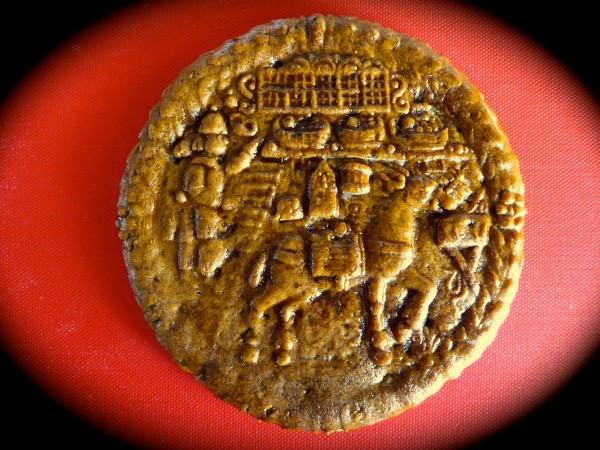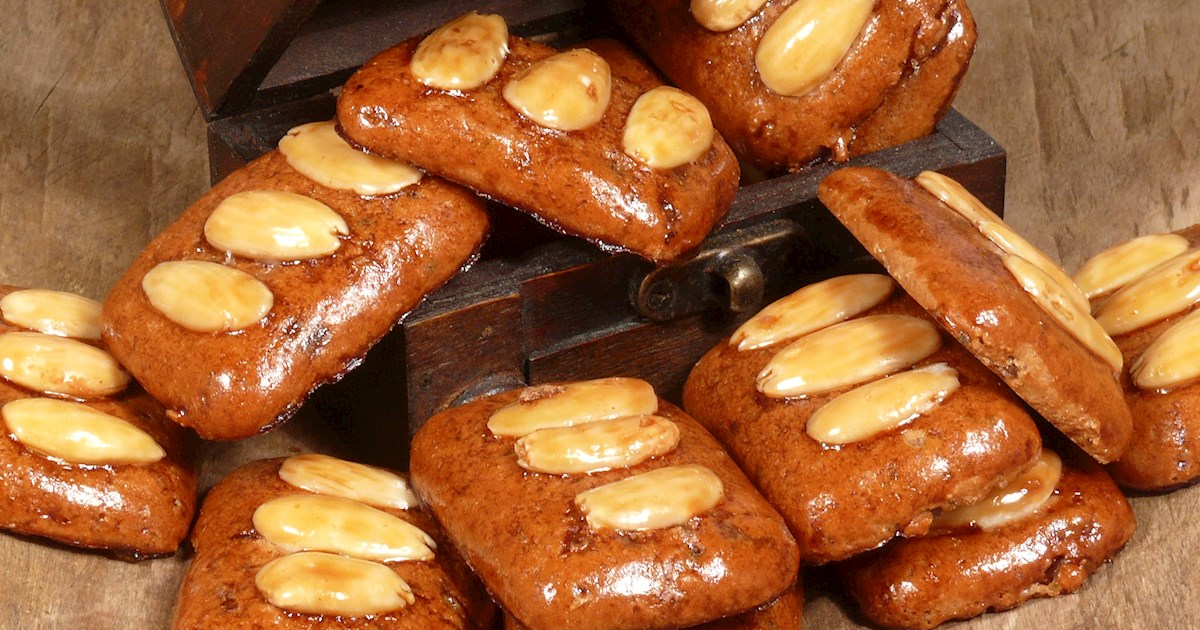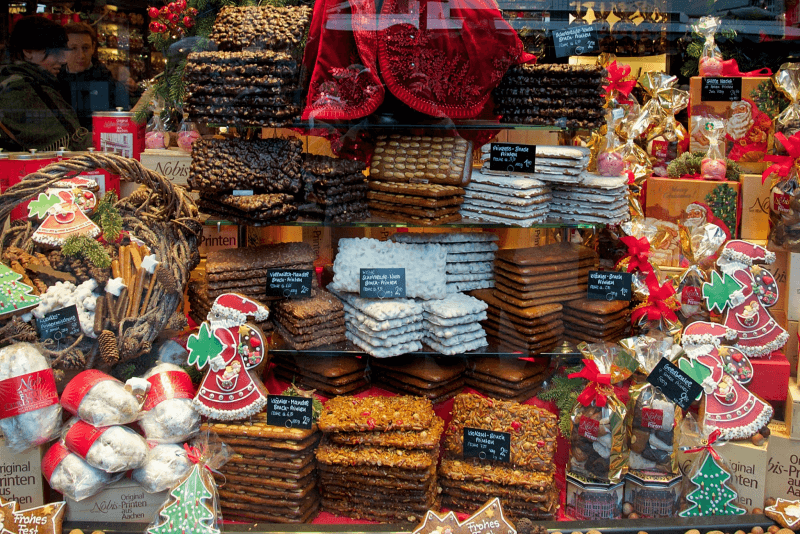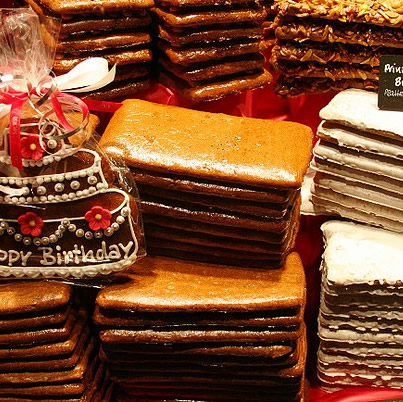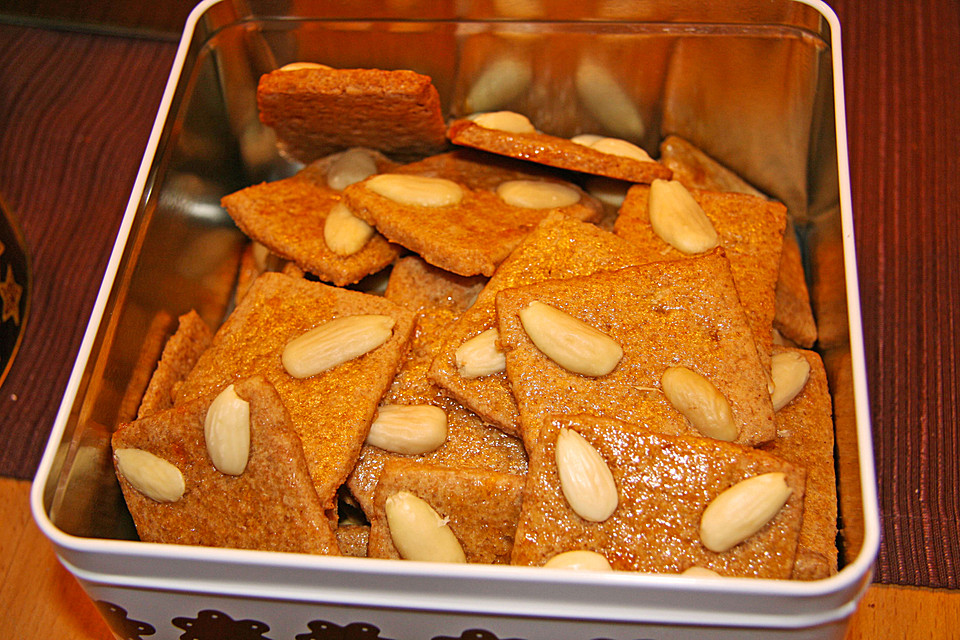Aachener Printen
Aachener Printen are a type of Lebkuchen originating from the city of Aachen in Germany. Somewhat similar to gingerbread, they were originally sweetened with honey, but are now generally sweetened with a syrup made from sugar beets. The term is a protected geographical indication, meaning that all manufacturers must be located in or near Aachen. Aachener Printen were at least partially created due to the numerous pilgrims who wanted to visit the Aachen Cathedral. The Printen were probably inspired by Couque de Dinant, a pastry from Dinant that was usually baked in the form of figurative representations or artistic braids. Gebildbrot came to Aachen in the 15th century with immigrant blacksmiths and quickly found popularity among the city's bakers. They made a soft dough sweetened with honey, which they pressed into elaborately carved baking molds depicting saints and other figures. The Aachener Printen became what they are now in 1806, when the French emperor Napoleon blocked the British trade routes and with them Aachen's supply of cane sugar and honey, the most important ingredients for the pastry. The bakers replaced the sweeteners with sugar and syrup from local beets. An original baker named Henry Lambertz then came up with the idea of rolling out the dough over raised molds. The robust cookies can be efficiently produced in large quantities and are ideal as travel provisions, which is why their reputation has spread far beyond Aachen. The Lambertz-Gruppe, founded in 1688, is Aachen's oldest and largest manufacturer of Printen.
Source: Wikipedia
Recipes
